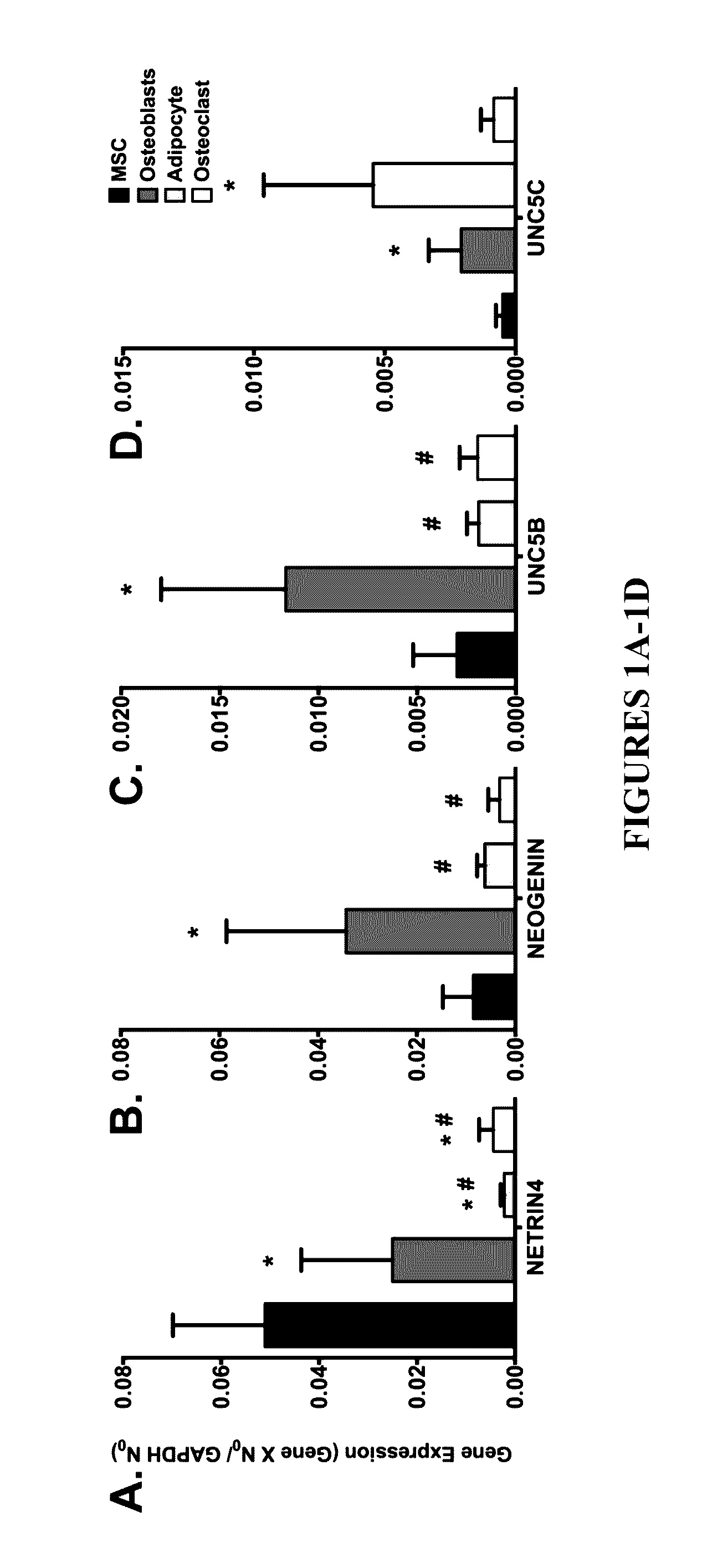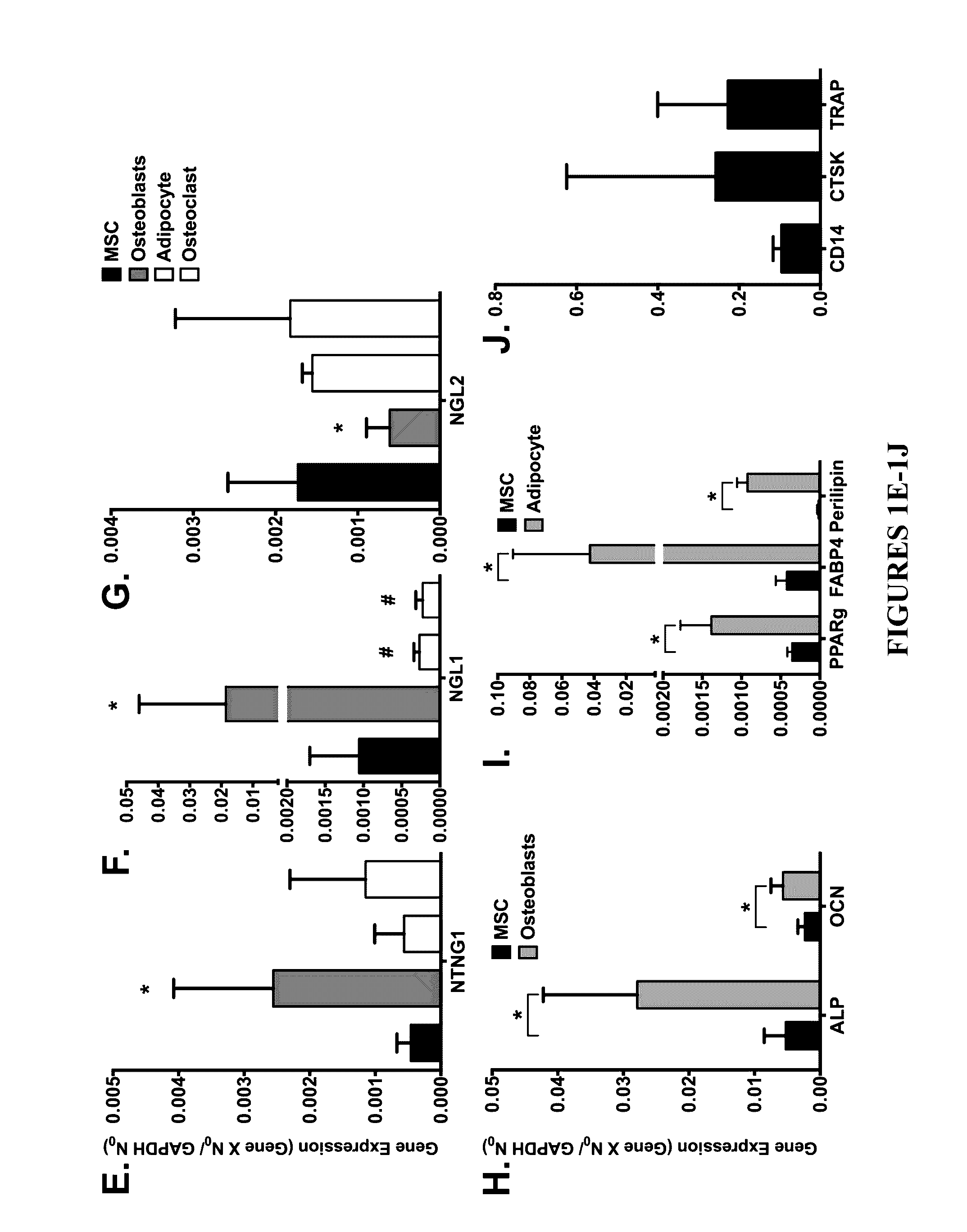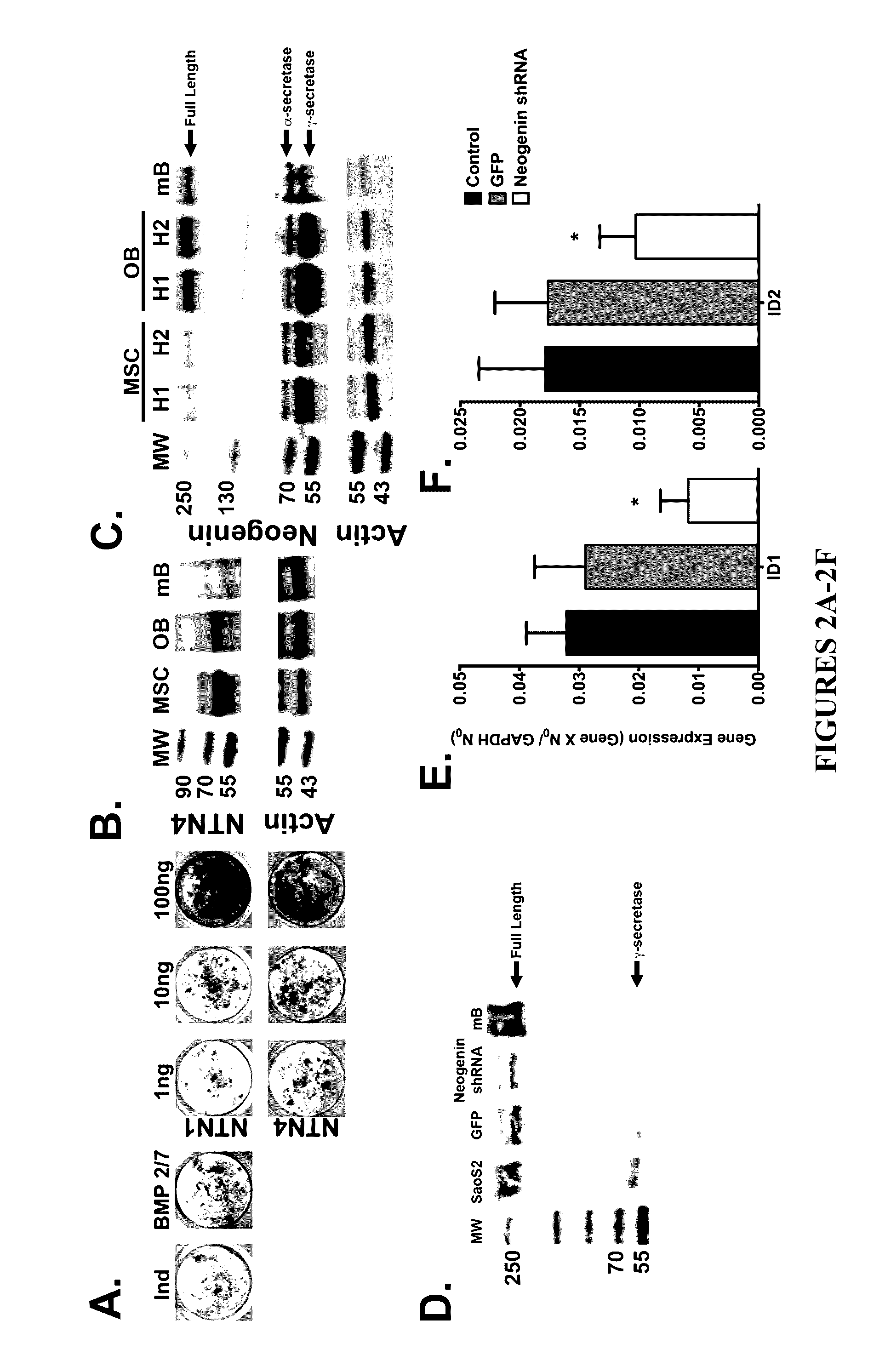Neurogenic regulation of bone growth and bone degradation
a bone growth and neuronal regulation technology, applied in the direction of prosthesis, drug composition, peptide/protein ingredient, etc., can solve the problems of bmp based therapies intended to generate bone and carry a risk of tumorigenesis, and cannot be used in patients with active tumors, so as to and reduce or prevent mineral formation or bone growth
- Summary
- Abstract
- Description
- Claims
- Application Information
AI Technical Summary
Benefits of technology
Problems solved by technology
Method used
Image
Examples
example 1
Netrin-Ligands Regulate Bone Formation and Bone Re-Absorption
[0057]Methods:
[0058]Human bone marrow was collected from consenting adult patients undergoing either an elective primary proximal femoral total hip arthroplasty or elective primary distal femoral total knee arthroplasty (n=6, mean age 65) as a part of an IRB approved study. Human MSC were derived from the adherent fraction of cells derived from each whole bone marrow aspirate collected while the monocyte population was collected from the non-adherent fraction of the bone marrow. The monocyte fraction was enriched through sub-culture with 100-ng / mL recombinant human macrophage colony-stimulating factor (MCSF; Wyeth). In parallel experiments described below, the femurs from 3-week (n=10) and 16-week (n=20) old male mice were collected and then the bone marrow was flushed from the femur according to the following: A 21-gauge needle was inserted into the femoral intramedular canal after the removal of the proximal and distal e...
example 2
The RGMa and RGMb-Ligands Inhibit Bone Formation while Promoting Bone Re-Absorption
[0092]Methods:
[0093]Human bone marrow was collected from consenting adult patients undergoing either an elective primary proximal femoral total hip arthroplasty or elective primary distal femoral total knee arthroplasty (n=6, mean age 65) as a part of an IRB approved study. Human MSC were derived from the adherent fraction of whole bone marrow aspirates. Monocytes were derived from the non-adherent fraction of bone marrow and enriched through a separate sub-culture using 100-ng / mL recombinant human macrophage colony-stimulating factor (MCSF; Wyeth). In parallel experiments described below, the femurs from 3-week (n=10) and 16-week (n=20) old male mice were collected and then the bone marrow was flushed from the femur according to the following: A 21-gauge needle was inserted into the femoral intramedular canal after the removal of the proximal and distal ends of the femur. Media was then carefully pas...
examples 3
The Slit1- and Slit2-Ligands Increased Bone Formation while Dlit3 Increased Bone Re-Absorption
[0123]Methods:
[0124]Human bone marrow was collected from consenting adult patients undergoing either an elective primary proximal femoral total hip arthroplasty or elective primary distal femoral total knee arthroplasty (n=6, mean age 65) as a part of an IRB approved study. Human MSC were derived from the adherent fraction of whole bone marrow aspirates. Monocytes were derived from the non-adherent fraction of bone marrow and enriched through a separate sub-culture using 100-ng / mL recombinant human macrophage colony-stimulating factor (MCSF; Wyeth). In parallel experiments described below, the femurs from 3-week (n=10) and 16-week (n=20) old male mice were collected and then the bone marrow was flushed from the femur according to the following: A 21-gauge needle was inserted into the femoral intramedular canal after the removal of the proximal and distal ends of the femur. Media was then ca...
PUM
| Property | Measurement | Unit |
|---|---|---|
| v/v | aaaaa | aaaaa |
| v/v | aaaaa | aaaaa |
| v/v | aaaaa | aaaaa |
Abstract
Description
Claims
Application Information
 Login to View More
Login to View More - R&D
- Intellectual Property
- Life Sciences
- Materials
- Tech Scout
- Unparalleled Data Quality
- Higher Quality Content
- 60% Fewer Hallucinations
Browse by: Latest US Patents, China's latest patents, Technical Efficacy Thesaurus, Application Domain, Technology Topic, Popular Technical Reports.
© 2025 PatSnap. All rights reserved.Legal|Privacy policy|Modern Slavery Act Transparency Statement|Sitemap|About US| Contact US: help@patsnap.com



